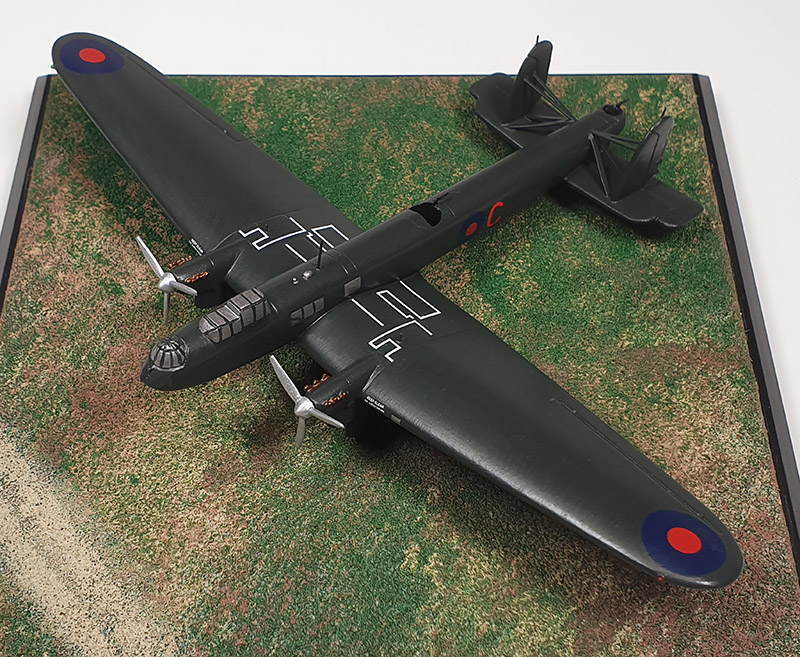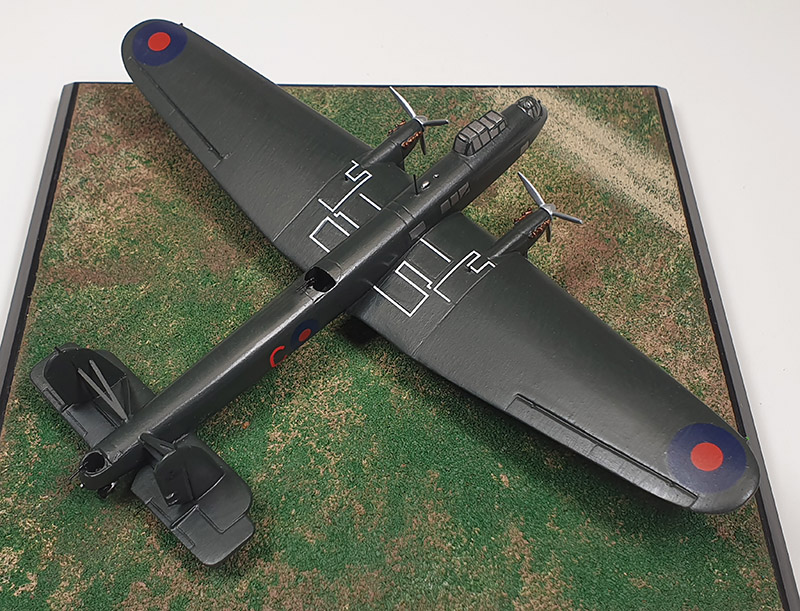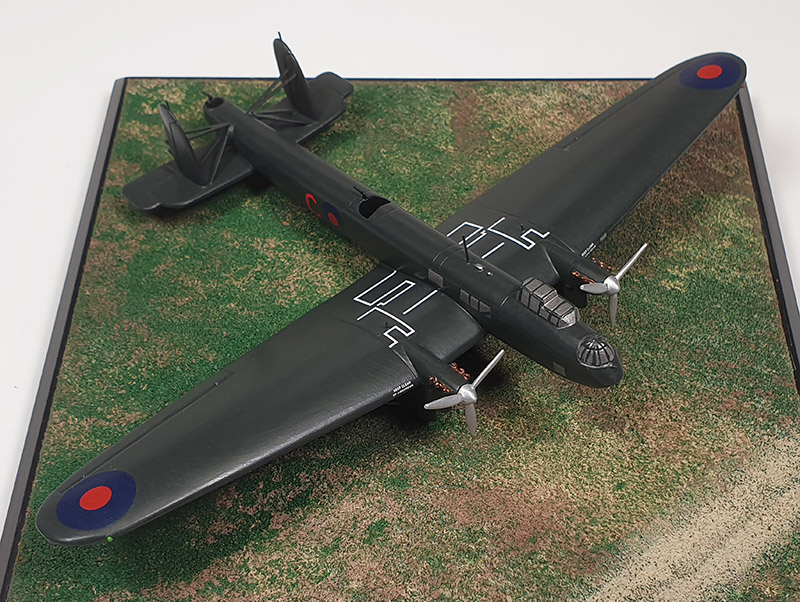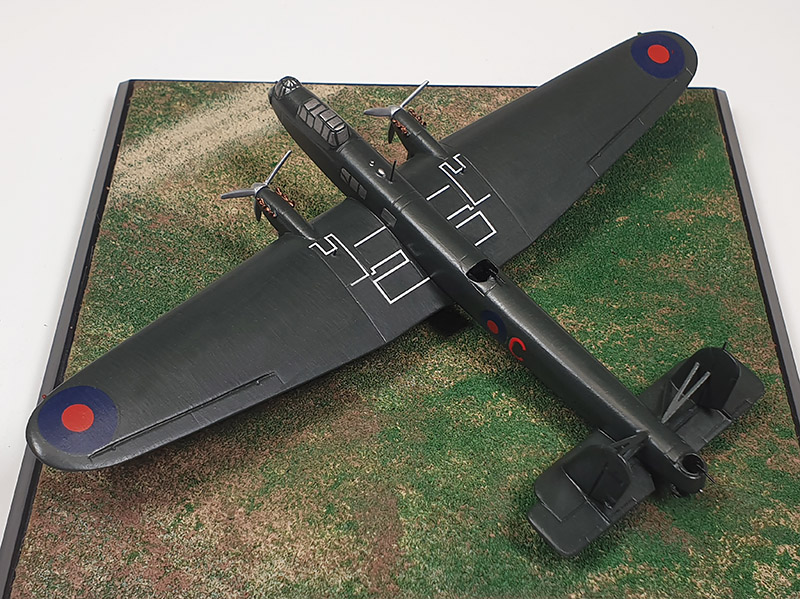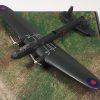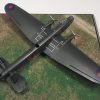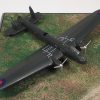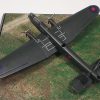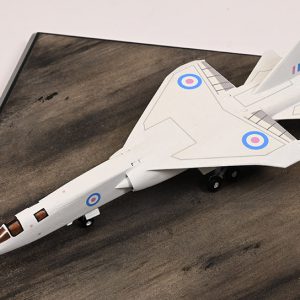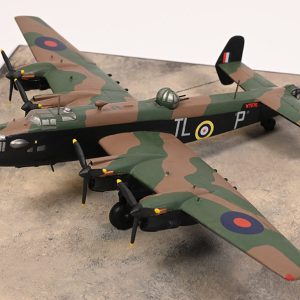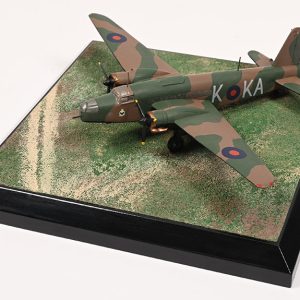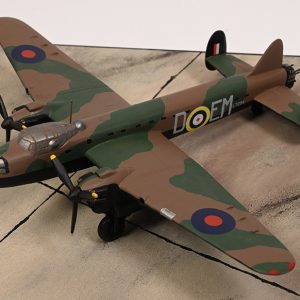Fairey Hendon Mk I K5092 C
38 Squadron, RAF Marham, April 1938.
The Fairey Hendon fills a small but significant niche in the history of the Royal Air Force, small because only enough were ordered to equip one squadron but significant in that it was the service’s first monoplane bomber.
In the decade following the Great War the bombers of the RAF looked little different from those of 1918; built by Vickers and Handley Page they were substantial but cumbersome biplanes, with their crew positions open to the elements. Specification B.19/27 was issued to find a night bombing landplane, seen as a replacement for the Vickers Virginia and requiring stability for a steady bombing platform and the ability to carry a bomb load of 1,546 pounds, with competitive flight trials scheduled for September 1931. Six companies submitted designs, and those from Fairey, Handley Page and Vickers were selected for prototype construction and evaluation.
The Fairey design was the only monoplane among these, and the prototype K1695 made its first flight on 25 November 1930 powered by two Bristol Jupiter XF radial engines. This was some time after the Vickers and Handley Page aircraft had flown but both of these were delayed by changes during their flight trials – one being because the RAF had decided that the pilot should sit on the left in a side-by-side cockpit – and while these were under way K1695 crashed on 15 March 1931 with extensive damage; with Fairey’s contender apparently out of contention and the Vickers Type 150 unsatisfactory, Handley Page were declared the winner and their HP.38 awarded a production contract; it was to serve in some numbers as the Heyford.
Nevertheless Richard Fairey persisted with his company’s entrant and, largely at Fairey’s expense, repaired their aircraft; re-engined with the Rolls-Royce Kestrel it recommenced flight trials in November 1931 flown by Fairey test pilot Chris Staniland, and arrived at Martlesham Heath in the following May for evaluation by the Air Ministry. Service trials on the Fairey Hendon were carried out by 10 Squadron, then based at Boscombe Down, and by 1933 the Air Ministry was considering Fairey’s entrant more favourably, perhaps because of its improved performance compared with the selected Heyford. In 1934 a limited production contract for fourteen aircraft was placed under Specification B.20.34 as a possible hedge against any delays in the next generation of heavy bombers; a second production batch of sixty was considered but in the event not required and all fourteen, built at Fairey’s new plant at Heaton Chapel in Cheshire, were delivered to 38 Squadron at Mildenhall replacing Heyfords, starting in November 1936. In May 1937 the squadron moved to Marham; for a short time one flight was detached to form the nucleus of 115 Squadron while awaiting its Harrows, but the aircraft did not adopt their new identity and returned to 38. Their service record was good, only two being lost; K5094, a dual-control aircraft, was taken for an unauthorised night “joyride” by a pair of LACs, one of whom pulled the throttles closed at 150 feet after takeoff. Replacement Wellingtons started to arrive at Marham in November 1938, the last Fairey Hendon leaving on 13 January 1939.
The Fairey Hendon was a monoplane through Fairey’s design solution to the specification rather than a deliberate Air Ministry attempt at “modernisation”; that would come through B.9/32, which would result in the Hampden and the Wellington and introducing retractable undercarriages to the monoplane layout. The Hendon, retaining a fixed “trousered” undercarriage but with an enclosed turrets for the front gunner was in effect a bridge between the big biplanes of the ‘twenties, substantially relics of the Great War, and the aircraft with which Bomber Command would go to war in 1939; and it was the last RAF aircraft to serve in the muddy green finish of “NIVO” that had been introduced right at the end of the Great War. As for the rapidly withdrawn Fairey Hendons, no less than ten were allocated “Maintenance” serials; K5092 became 1617M, allocated to the Electrical and Wireless School at Cranwell.


